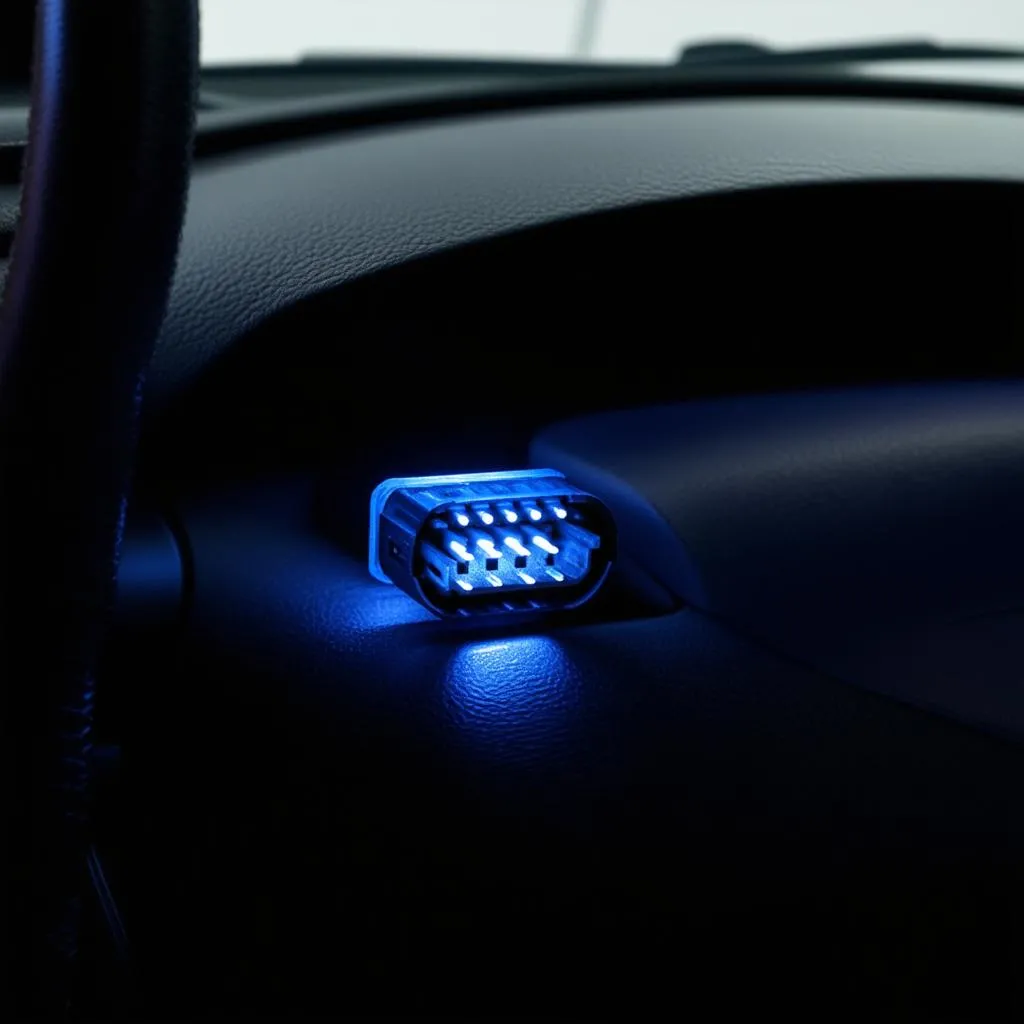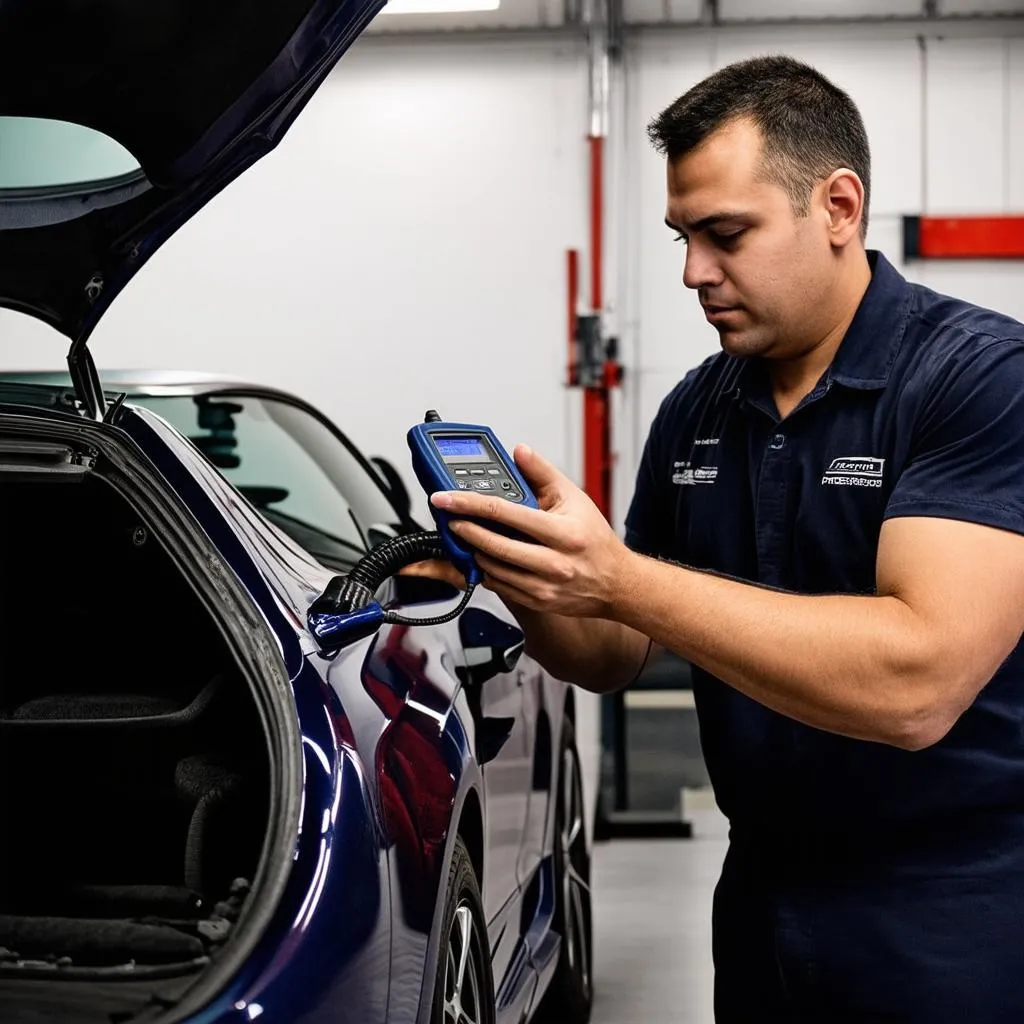Imagine this: You’re driving down a beautiful country road, the wind in your hair, when suddenly, your check engine light pops on. Frustrating, right? We’ve all been there. Now, what if I told you there’s a way to understand what your car is trying to tell you, a secret language hidden within its circuitry? That’s where the 16 pin J1962 OBD-II proprietary connector comes in.
Deciphering the Code: What is a 16 Pin J1962 OBD-II Proprietary Connector?
The “16 pin J1962 OBD-II connector” might sound intimidating, but it’s really just your car’s way of communicating. Think of it like a universal translator for your vehicle. This standardized 16-pin connector, often located under the dashboard on the driver’s side, provides access to your car’s onboard diagnostics system. It’s through this port that mechanics and car enthusiasts alike can tap into a wealth of information about your car’s health and performance.
The Power of the Proprietary: Why Does it Matter?
Now, here’s where things get interesting. While the standard OBD-II connector provides access to general diagnostic information, the “proprietary” aspect means that certain car manufacturers use specific pins within that 16-pin connector for their unique systems. This allows for deeper diagnostics and more specialized data retrieval.
Let’s say you’re experiencing an issue specific to your BMW’s transmission. A generic OBD-II scanner might throw a general code, but a dealer-level scanner, designed to communicate with BMW’s proprietary protocols, can pinpoint the exact issue within the transmission system. It’s like having a specialist translate a complex medical diagnosis – you get a more accurate and detailed understanding of the problem.
Common Questions About the 16 Pin J1962 OBD-II Proprietary Connector
You might be wondering:
- What can I do with a 16 pin J1962 OBD-II proprietary connector? From reading and clearing diagnostic trouble codes to accessing live data streams, performance monitoring, and even module programming, the possibilities are vast. It’s like having a window into your car’s brain!
- Do I need a specialized scanner for my car? While a generic OBD-II scanner can provide basic information, accessing proprietary functions often requires a dealer-level or manufacturer-specific scan tool.
- Is it safe to use a proprietary scanner on my car? When used correctly, these scanners are safe. However, it’s crucial to use a reputable tool and to avoid modifying any settings without proper knowledge.
Beyond Diagnostics: The Deeper Meaning
Interestingly, there’s a fascinating parallel between the 16 pin J1962 OBD-II connector and the concept of self-awareness. Just as this connector allows us to understand our cars better, self-reflection helps us understand ourselves. In many ways, maintaining a car mirrors personal growth: regular check-ups, addressing issues promptly, and striving for optimal performance are crucial for both.
 Car Dashboard
Car Dashboard
Exploring Further: Related Questions
- What are the differences between OBD-I and OBD-II?
- How can I find a reliable mechanic who specializes in my car’s make and model?
- What are some recommended dealer-level scanners for European cars?
 Mechanic Using Scanner
Mechanic Using Scanner
Need Help Navigating the World of Car Diagnostics?
At techcarusa.com, we’re passionate about empowering car owners with knowledge. If you’re looking for reliable information on diagnostic tools, software installation, or simply need expert advice, don’t hesitate to reach out to our team of automotive specialists via WhatsApp at +84767531508. We’re here to help you unlock the secrets of your car!
Drive with Confidence: Knowledge is Power
Understanding your car’s diagnostics doesn’t have to be daunting. By demystifying the 16 pin J1962 OBD-II proprietary connector, you’re one step closer to becoming a more informed and confident car owner. Remember, regular maintenance and a proactive approach to diagnostics are key to a smooth and enjoyable driving experience.